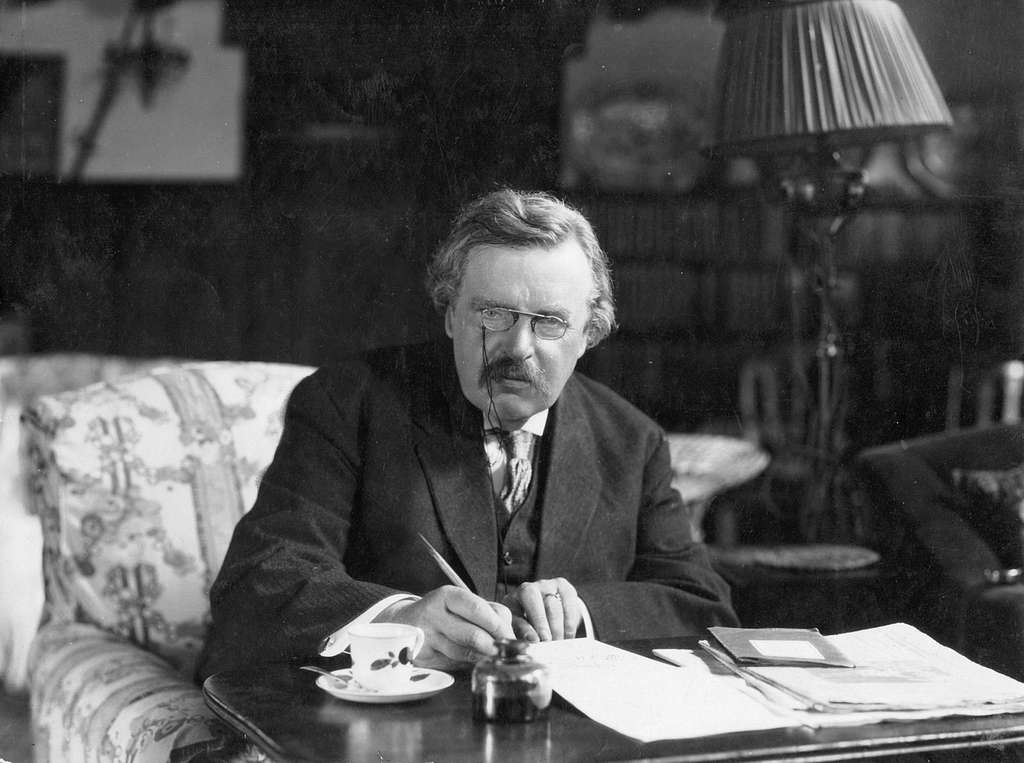
Gilbert Keith Chesterton (1874–1936) was an English writer, philosopher, and critic, celebrated for his sharp wit, paradoxical style, and profound insights into faith, society, and human nature. Best known for works like Orthodoxy and the Father Brown detective stories, he was a towering figure in 20th-century literature, often dubbed the "prince of paradox" for his ability to turn conventional wisdom on its head with humor and clarity.
He converted to Catholicism on July 30, 1922, a pivotal moment in his life and work.
Gilbert Keith Chesterton was an English author, journalist, and thinker, born in 1874, renowned for his essays, novels, and apologetic works like The Everlasting Man and Orthodoxy.
He created Father Brown, a humble Catholic priest and detective who solves crimes using intuition and moral insight, featured in over 50 short stories.
His knack for crafting statements that seem contradictory yet reveal deep truth—e.g., “The true soldier fights not because he hates what is in front of him, but because he loves what is behind him”—earned him this title.
Chesterton converted to Roman Catholicism in 1922, and his faith deeply influenced works like Orthodoxy, where he defended Christian belief with reason and joy.
His essays and books influenced writers like C.S. Lewis and J.R.R. Tolkien, blending humor, philosophy, and theology to challenge modern skepticism.
He wrote with a lively, conversational tone, often using paradoxes, puns, and vivid imagery to make complex ideas accessible and engaging.
He’s celebrated through societies like the American Chesterton Society, annual conferences, and reprints of his works, keeping his ideas alive.
His writings encourage wonder at the ordinary, critical thinking about modernity, and a joyful embrace of life’s mysteries.
Yes, like “The world will never starve for want of wonders, but only for want of wonder,” from Tremendous Trifles, capturing his philosophy.
He critiqued its materialism and loss of tradition, advocating a return to common sense and gratitude, as seen in What’s Wrong with the World.
Chesterton was drawn to Catholicism’s intellectual rigor, historical continuity, and sacramental view of life. He saw it as the fullest expression of truth, writing in The Catholic Church and Conversion that it offered “a cosmos against a chaos.” His wife Frances’ earlier conversion and his debates with skeptics also played key roles.
In works like The Everlasting Man, he argued that Catholicism uniquely explains human history and nature, countering secular narratives with evidence of the Church’s enduring vitality.
He viewed sacraments like Confession and the Eucharist as tangible encounters with divine grace, famously noting in *Orthodoxy* that “the hands that made the sun and stars were too small to reach the huge heads of the cattle” until they became human in Christ.
Yes, Father Brown reflects Chesterton’s belief in humility, reason, and redemption. The priest’s understanding of sin comes from his own self-awareness and confessional experience, embodying Catholic anthropology in a subtle, narrative form.
Not yet, but there’s interest. In 2019, a preliminary investigation into his canonization was closed without advancing, though fans still admire his holiness. His life of charity, prayer, and defense of the faith inspires ongoing discussion.
His faith led him to Distributism, an economic philosophy rooted in Catholic social teaching. With Hilaire Belloc, he opposed both capitalism and socialism, advocating for widespread property ownership to protect family life and human dignity, as detailed in The Outline of Sanity. He believed society thrives when rooted in Christian principles of justice and subsidiarity.